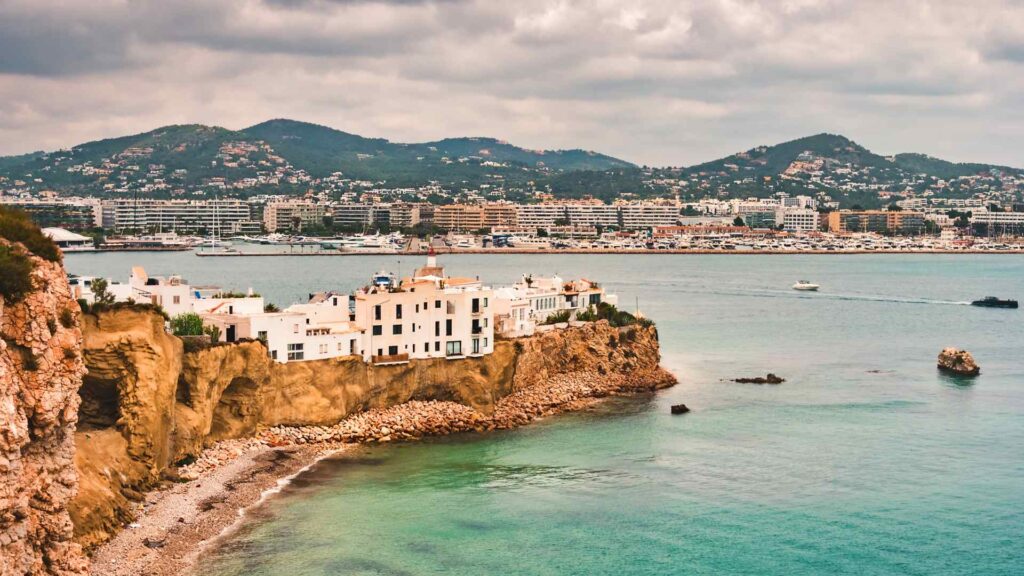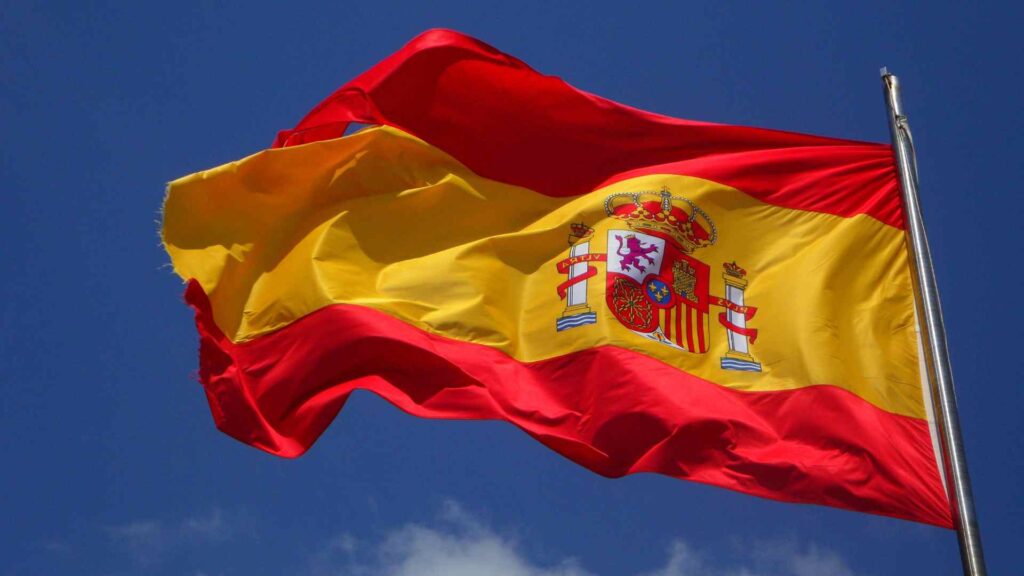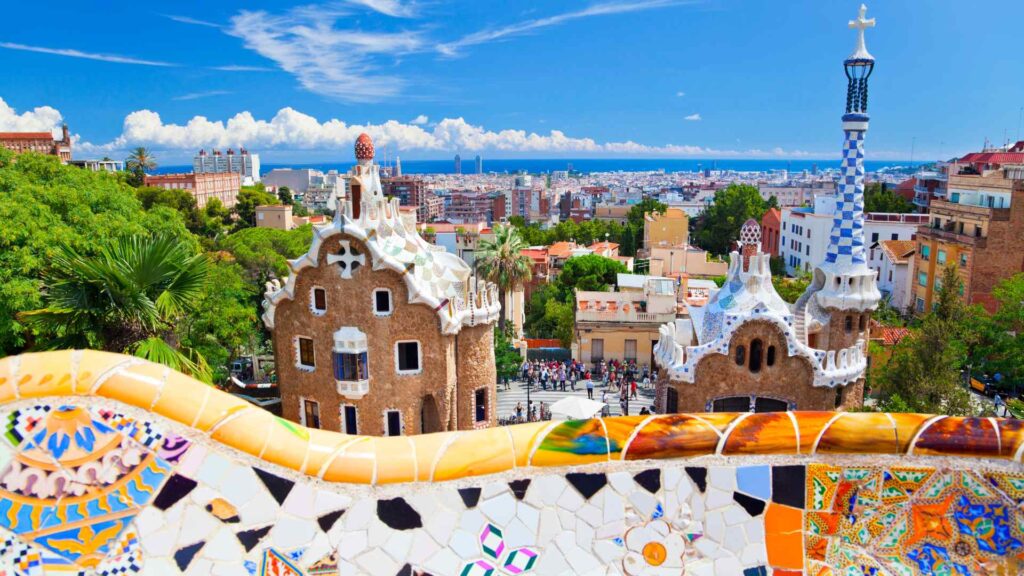Spain is a land filled with captivating stories, incredible landscapes, and traditions that date back centuries.
In this guide, we’ll explore a treasure trove of fun facts about Spain across various themes. Get ready to learn about Spain’s vibrant festivals, unique cuisine, famous landmarks, and more!
Spanish Culture and Traditions
- Flamenco is more than a dance; it’s a combination of song, guitar, and dance, originating from Andalusia.
- The “siesta,” a short nap after lunch, is famous worldwide, though not as widely practiced in modern Spain.
- Spain is known for its lively festivals, including La Tomatina, a tomato-throwing event in Buñol.
- Spanish people often eat dinner around 10 p.m., much later than in most other countries.
- Bullfighting, although controversial, is deeply rooted in Spanish culture, with some regions banning it.
- Tapas, small dishes served with drinks, are a social staple and are enjoyed across Spain.
- The running of the bulls in Pamplona is part of the San Fermín festival, drawing thousands of thrill-seekers annually.
- “El Día de los Santos Inocentes” is celebrated on December 28 and is Spain’s version of April Fool’s Day.
- In Spain, people traditionally eat 12 grapes at midnight on New Year’s Eve, one for each stroke of the clock.
- The “Castells” or human towers, seen in Catalonia, are a UNESCO-recognized tradition.
- Spaniards often greet each other with two kisses on the cheeks, even for initial introductions.
- Semana Santa, or Holy Week, is celebrated across Spain with elaborate processions and rituals.
- Spain has a rich tradition of hand-painted ceramics, particularly from Andalusia.
- Spanish Christmas lasts until January 6, with Three Kings’ Day as the main gift-giving holiday.
- Spain’s first name, Hispania, was given by the Romans, which means “land of rabbits.”

Spanish Language Facts
- Spanish, or Castellano, is Spain’s official language, but the country has four co-official languages, including Catalan, Galician, and Basque.
- Spanish is the second most spoken native language worldwide after Mandarin.
- The “ñ” character used in Spanish words is unique to the language, representing a “ny” sound.
- Some Spanish dialects in Spain and Latin America differ significantly in pronunciation and vocabulary.
- “Vale” is a popular word in Spain, meaning “okay” or “alright.”
- Spanish is known for its different accents, with each region having unique variations.
- Spanish language syntax is known for placing verbs at the start of questions, unlike English.
- Spain’s Catalonia region uses Catalan as the primary language, distinct from Spanish.
- The Real Academia Española (RAE) regulates Spanish grammar and vocabulary, established in 1713.
- Spanish surnames often consist of two last names, with the father’s surname coming first.
- Pronunciation varies across Spain; in the south, the “s” sound at the end of words is often dropped.
- The Basque language, spoken in northern Spain, is one of the oldest languages in Europe and unrelated to any other.
- Spanish is one of the official languages of the United Nations.
- “Gracias” and “por favor” are widely used across Spain, reflecting polite language customs.
- In some parts of Spain, “vosotros” is used informally for “you all,” which is not common in Latin American Spanish.

Spanish Geography and Landscape
- Spain is the fourth largest country in Europe and the second largest in the EU.
- The Pyrenees mountain range separates Spain from France, marking a natural border.
- Spain has over 5,000 miles of coastline, featuring some of Europe’s best beaches.
- The Canary Islands are a Spanish archipelago located near the northwest coast of Africa.
- Spain is home to the only desert in Europe, the Tabernas Desert in Almería.
- The Iberian Peninsula, where Spain is located, includes both Spain and Portugal.
- Spain has 15 national parks, each with unique ecosystems and landscapes.
- Teide Volcano in Tenerife is Spain’s highest peak at 3,718 meters.
- Spain’s river, the Ebro, is the second longest in the Iberian Peninsula.
- Mallorca, Spain’s largest island, is part of the Balearic Islands in the Mediterranean.
- Spain’s “Green Spain” in the north is lush and rainy, in contrast to its dry, sun-drenched south.
- Spain’s diverse climate includes Mediterranean, continental, oceanic, and even alpine regions.
- Spain has around 8,000 islands, including Ibiza and Mallorca, famous for their vibrant tourism.
- The Guadiana River flows through both Spain and Portugal, marking part of the countries’ border.
- Mount Mulhacén in the Sierra Nevada is the highest mountain on the Spanish mainland.
Spanish History and Politics
- Spain was unified in 1492 under King Ferdinand and Queen Isabella.
- The Spanish Inquisition, established in 1478, was aimed at maintaining Catholic orthodoxy.
- Spain’s “Golden Age” from the 16th to 17th century marked a period of immense wealth and global influence.
- Spain had one of the world’s largest empires, spanning Europe, the Americas, Africa, and Asia.
- General Francisco Franco ruled Spain from 1939 until his death in 1975.
- Spain’s monarchy was restored in 1975, with King Juan Carlos I as the head of state.
- Spain is a constitutional monarchy, meaning the King’s powers are limited by the constitution.
- The Moors ruled much of Spain from 711 to 1492, greatly influencing Spanish culture and architecture.
- Spain joined the European Union in 1986, enhancing its economic integration with Europe.
- The Spanish Civil War (1936–1939) was a significant conflict that reshaped the nation.
- Spanish history includes prominent explorers like Christopher Columbus and Hernán Cortés.
- Spain once controlled parts of modern-day Italy, the Netherlands, and the Americas.
- The Reconquista was a centuries-long effort to reclaim Spanish land from the Moors.
- Spain has had various capitals throughout history, including Toledo, before settling on Madrid.
- The Alhambra in Granada is one of Spain’s most famous remnants of Moorish rule.
Spanish Cuisine and Food Facts
- Spain is the birthplace of “paella,” a traditional rice dish that originated in Valencia.
- Spanish people enjoy a small breakfast, with lunch being the largest meal of the day.
- Tapas, small dishes served with drinks, are thought to have originated as a way to cover drinks.
- Spain produces 45% of the world’s olive oil, especially in Andalusia.
- Spanish chorizo is a flavorful sausage made from pork, paprika, and garlic.
- Jamón Ibérico is a famous Spanish ham, made from acorn-fed Iberian pigs.
- Spanish gazpacho is a refreshing, cold soup made from tomatoes, cucumbers, and peppers.
- Tortilla Española, or Spanish omelet, is a popular dish made with potatoes and eggs.
- Spain’s traditional Christmas dessert is “turrón,” a type of nougat with almonds.
- Spaniards have their own unique take on hot chocolate, thicker and richer than most.
- Spain’s wine industry is renowned, with La Rioja as one of the oldest and best-known regions.
- Spaniards enjoy a “merienda,” a light meal between lunch and dinner.
- Manchego cheese, made from sheep’s milk, is a staple in Spanish cuisine.
- Spain has some of Europe’s best seafood, especially along the coastlines.
- Spanish people often accompany their meals with bread, which is seen as essential.

Iconic Landmarks and Monuments
- La Sagrada Família in Barcelona is an unfinished masterpiece by Antoni Gaudí.
- Spain is home to the historic Alhambra palace in Granada, a stunning example of Moorish architecture.
- The Mezquita-Catedral de Córdoba is known for its beautiful arches and history as a mosque-turned-cathedral.
- El Escorial near Madrid was a royal palace and monastery commissioned by King Philip II.
- The Guggenheim Museum in Bilbao is an architectural marvel designed by Frank Gehry.
- The ancient Roman aqueduct in Segovia is one of Spain’s best-preserved Roman structures.
- The Catedral de Santiago de Compostela is a major pilgrimage destination in Europe.
- The Alcázar of Seville is a breathtaking example of Mudejar architecture.
- Plaza Mayor in Madrid is a large, historic public square dating back to the 17th century.
- Mount Teide in Tenerife offers spectacular views and is a UNESCO World Heritage site.
- The city of Toledo is known for its medieval architecture and cultural fusion.
- La Rambla in Barcelona is a famous pedestrian street filled with shops and entertainment.
- Ronda’s Puente Nuevo is an impressive bridge spanning a deep gorge.
- The Cave of Altamira in Cantabria contains some of Europe’s oldest cave art.
- Park Güell in Barcelona, another Gaudí creation, is an iconic colorful park with mosaic art.
Bonus Facts About Spain
- Spain produces the world’s largest amount of saffron.
- Spaniards are known for their warm hospitality and social nature.
- Soccer is a national passion, with fierce rivalries between teams like Real Madrid and Barcelona.
- Spanish surrealist artist Salvador Dalí is one of the world’s most famous painters.
- Spain has hosted the Olympics twice, in Barcelona in 1992 and in Madrid in 2028.
- Spanish is the second most widely taught language in the world.
- The Spanish constitution prohibits any region from seceding from the country.
- Spanish architecture heavily influenced the style of buildings in Latin America.
- “El Gordo” is Spain’s huge Christmas lottery, offering one of the largest payouts worldwide.
- Spain’s carnival in Cádiz is one of the oldest and liveliest in Europe.
- Spain has more UNESCO World Heritage sites than any other country except Italy and China.
- Tapas culture encourages socializing and is a staple of Spanish nightlife.
- Spain has two enclaves in North Africa, Ceuta, and Melilla.
- The Prado Museum in Madrid houses one of the finest art collections in the world.
- Spanish telenovelas are popular across Latin America.
- Spain was the first country to officially recognize same-sex marriage in Europe.
- “Sobrino de Botín” in Madrid is the world’s oldest restaurant, established in 1725.
- Spanish film director Pedro Almodóvar is internationally celebrated for his work.
- The Balearic Islands are famous for their vibrant nightlife.
- Ibiza is a UNESCO World Heritage site known for its biodiversity.
- Spain’s King Juan Carlos I is credited with restoring democracy.
- Spain has some of the most picturesque hiking trails in Europe.
- The Spanish language has roots in Vulgar Latin.
- Street markets, like Madrid’s El Rastro, are beloved by locals.
- Spain’s education system ranks among the best in the world.
- Spain exports many luxury products, including wine and leather goods.
- Spanish wedding ceremonies include a unique tradition of coin exchange.
- Sherry, a fortified wine, originated in the Spanish town of Jerez.
- Spaniards enjoy free healthcare through a national health service.
- Spain’s trains are some of the fastest in the world.
- Spain has an extensive network of historical paradores, or hotels.
- The Moors brought oranges to Spain, which thrive in the climate.
- Famous Spanish writer Miguel de Cervantes wrote “Don Quixote.”
- Spain’s “El Escorial” is one of the largest buildings in the world.
- Some of Europe’s oldest music festivals are held in Spain.
- Valencia is famous for hosting Las Fallas, a fiery festival of fireworks.
- The Spanish court system is one of Europe’s oldest.
- Castilian Spanish developed after the Christian Reconquista.
- Spain is a world leader in renewable energy, particularly wind power.
- Valencia is famous for its colorful “Ciudad de las Artes y las Ciencias.”
- Madrid’s skyline is marked by the iconic “Puerta de Europa” towers.
- In Spain, it’s customary to exchange a cheek kiss with friends.
- Spain’s economy relies heavily on tourism and agriculture.
- Spanish folklore includes mythical creatures like El Hombre Lobo.
- San Sebastián has some of the most Michelin-starred restaurants.
- Valencia has its own style of dress worn during traditional festivals.
- The festival of San Isidro is one of Madrid’s oldest traditions.
- Spain’s beaches are a top destination for European tourists.
- Granada was the last Muslim stronghold in Spain.
- The Plaza de Toros in Seville is one of Spain’s oldest bullrings.
